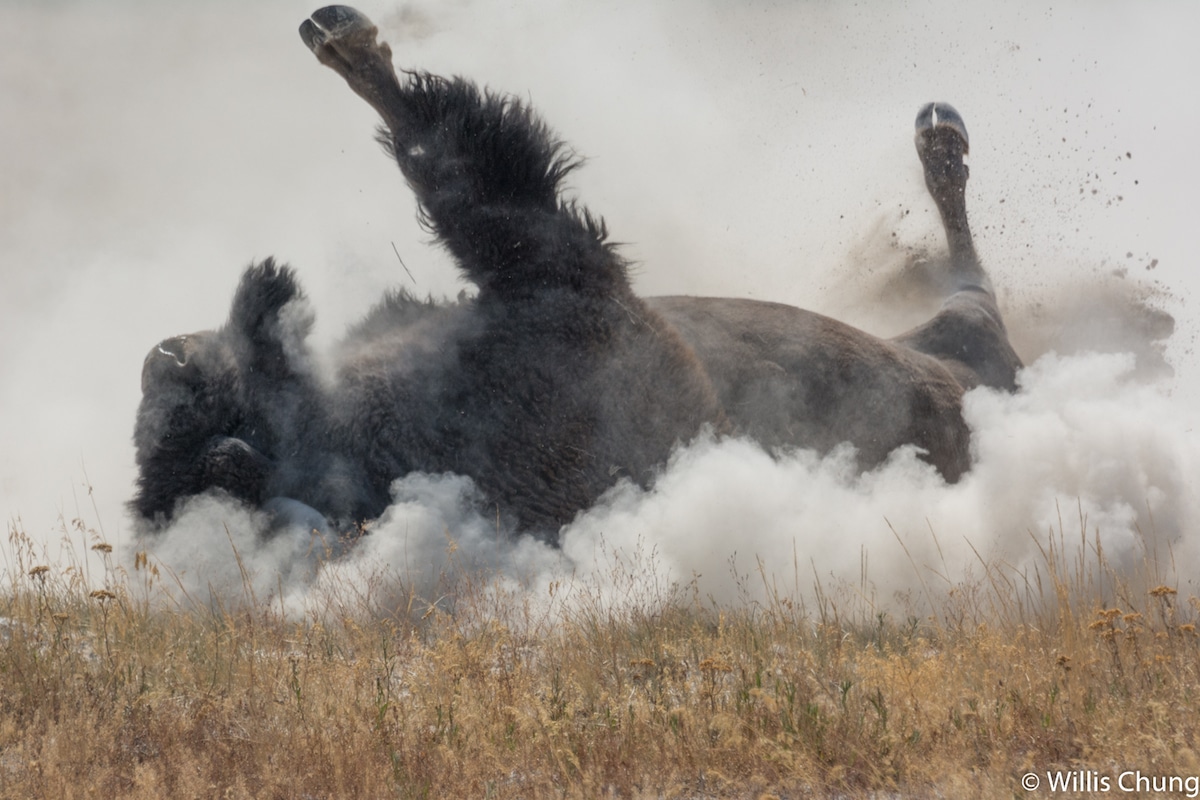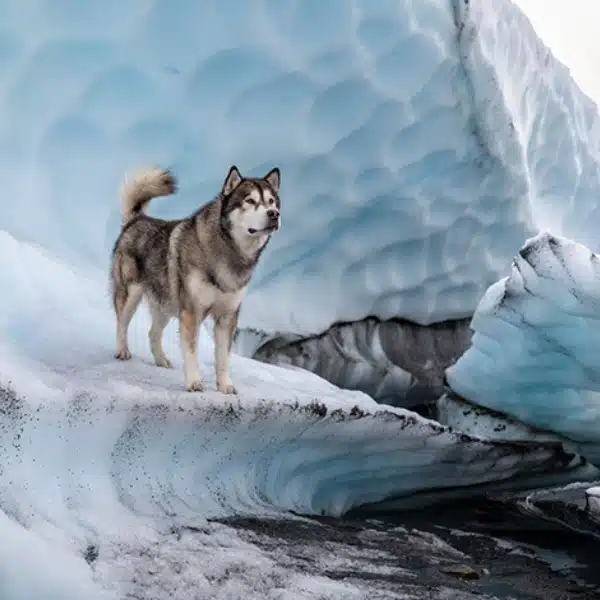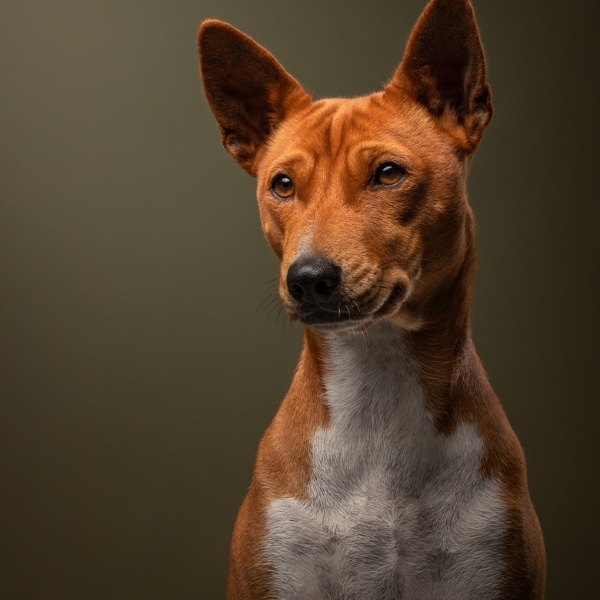
It wasn't Willis Chung‘s first time photographing wildlife at Yellowstone, so he knew to be prepared for anything. But the Denver-based neuroradiologist was in for a surprise in August 2016, when he had an unusual encounter with a bison he was photographing along the Nez Pearce Creek in western central Yellowstone.
Chung, whose love of photography began at 12 years old, used his experience to keep the recommended safety distance of 25 yards between him and the bison as he photographed the animal for over 90 minutes. The lone bison bull was heading back to the hills after mating season, allowing Chung to photograph him while moving along the road—even taking a 20-minute nap.
Chung also captured the bison while wallowing—rolling in the dirt to scratch the areas they can't reach otherwise—all while strapped with 16 pounds of Nikon equipment. But then, as he set down his tripod with a Nikon 300mm f/2.8 VR attached to a Nikon D800E, the bison made an unexpected move.
“After a few energetic rolls in the dirt, the bull rocked to its feet, snorted, and trotted over directly towards me. I had anticipated this situation and had done some research on Google,” Chung tells My Modern Met. “I knew my best choice was to head 90 degrees away from the bull’s path, constantly changing my direction to keep moving perpendicular to the bull’s path. I took a quick handheld photo with the D7100 on a mild telephoto setting, and went to my left, yelling ‘Yea ha!' at the top of my voice and opening my arms wide to look bigger. The bull steered off to the right, and I continued to the left as we made a circle around the camera and tripod I had decided to leave behind.”
At that point, Chung realized the bison wasn't interested in him at all. Instead, the animal turned his attention to the tripod, carefully approaching the camera, and satisfied with what he saw, ambling away leaving the equipment intact. Though a bit shaky, Chung was unharmed. What did he do afterward? “[I took] a long tea and lunch break and sent thanks to whoever was watching over me from above!”
While Chung got some interesting photographs, he concedes that the encounter was a failure on his part, in some ways. “It's been my interest to photograph animals in the wild engaging in their normal behavior, and not interact with them. Even though I maintained more than the 25 yards minimum distance recommended by the National Park Service (bears and wolves 100 yards), it was clearly too close for this bull at this time,” he shares. “I was the only human around for a great distance, and as such became an object of curiosity. It appears that my camera and tripod became the objects of interest, but not in a desirable way. I learned that when I'm the only human around, larger distances to a potentially dangerous animal is advisable.”
Photographer Willis Chung was spending time in Yellowstone when he photographed a bison from the recommended safety distance for over an hour.


He even caught the bison taking a nap…

And wallowing in the dirt to give his back a scratch.




But then the mood changed, and suddenly the bison turned his attention to the photographer, making a charge at him.



Luckily, in the end, the bison seemed more interested in checking out Chung's camera equipment.


After a close inspection, the bison ambled away—seemingly satisfied with what he saw!

























































































